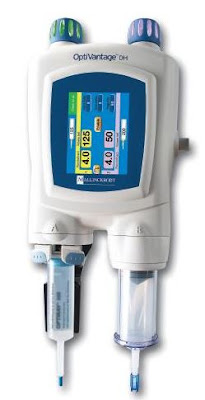Department’s Mechanical Injector Protocol
The following established procedure can dramatically reduce the number of adverse incidents related to Intravenous (IV) injection. This is primarily true because as personnel become accustomed to a given routine, any deviation from the routine will serve as a red flag and cause the radiologic technologist to reexamine and double check the system in question. Nowhere is this more true than in procedures involving the use of mechanical injectors. The potential of introducing an air embolus into the patient is quite real. Although rare, the consequences of such a mistake can be catastrophic. This risk can be greatly reduced when ALL personnel follow the same strict guidelines.
Before Injection
- After establishing that the use of an iodinated contrast agent is appropriate like checking the doctor’s order, the patient’s identity, allergies, and blood work if available.
- The injector should be loaded using a prefilled syringe from the contrast warmer.
- The syringe is locked into place.
- The connector tubing is attached to the syringe. A locking cannula like; BD interlink plastic cannula (Baxter) is connected to the tubing.
- The contrast is bled through the connector tubing and the cannula. Unless the cannula is to be immediately hooked to the patient’s intravenous (IV) line, the cannula cap must be replaced to prevent contamination of the sterile set.
- Once the injector is loaded and the air bled from the line, the syringe should be pointed toward the ground. This is visual indicator for other personnel that the injector has been loaded.
Injector
- The injector site should be visually monitored for the 1st few seconds of the injection.
- Anytime the alarm on the injector sounds, the injector and injection site should be visually inspected before proceeding.
After Injection
The possibility of accidental air embolus can be significantly reduced by strict adherence to at least one of the following procedures:
- When the injector tubing is disconnected from the patient’s IV, the injector head is turned so that the syringe points toward the ceiling – this provides a visual clue that the syringe has been used.
- Cut the connector tubing – this will allow other team members to immediately know that the syringe has been used and needs to be replaced. It will also make it possible to accidentally reconnect a used syringe.
- Do not withdraw the plunger from the syringe unless the syringe will be removed from the mechanical injector at the time.









No comments:
Post a Comment